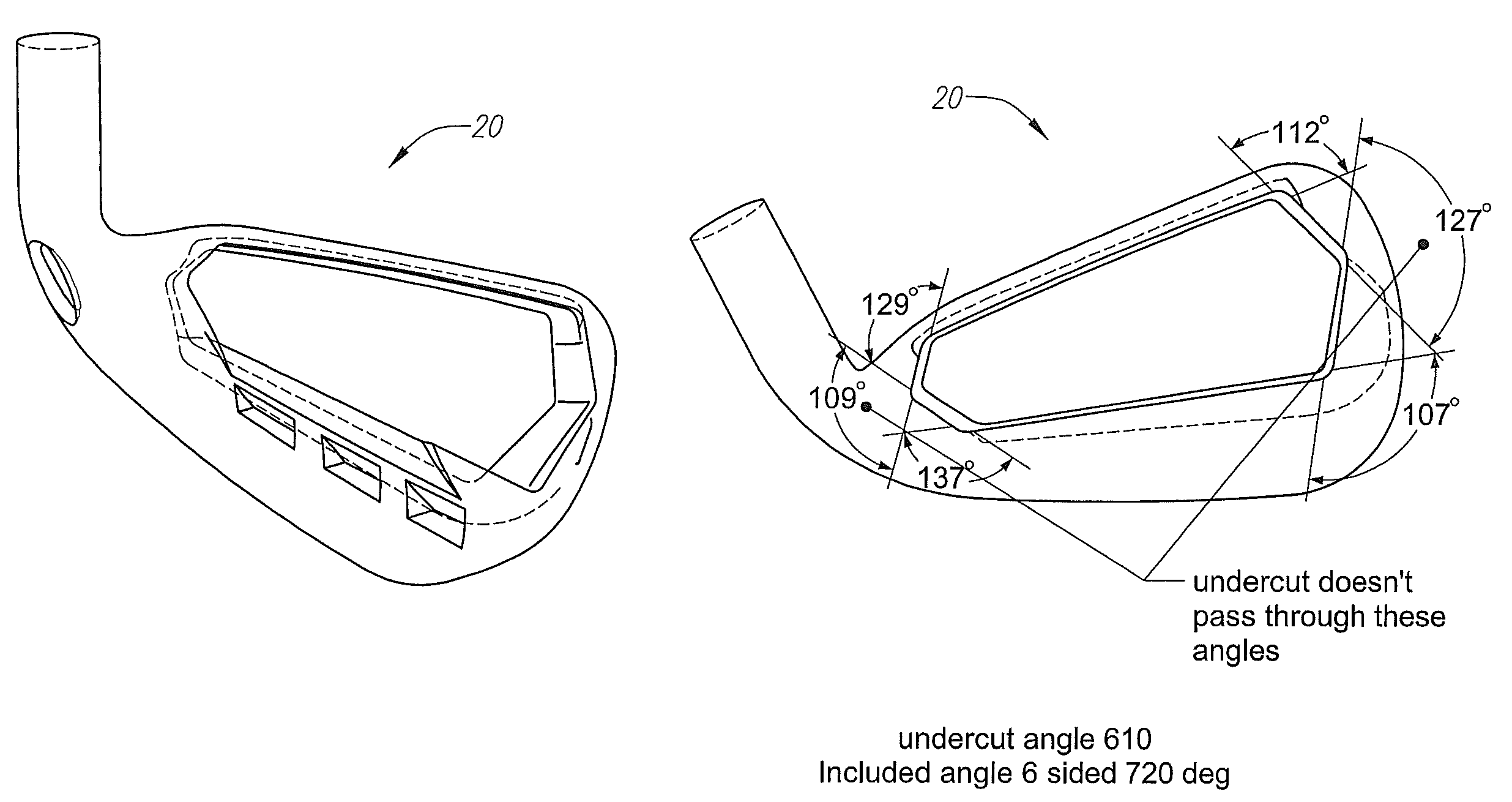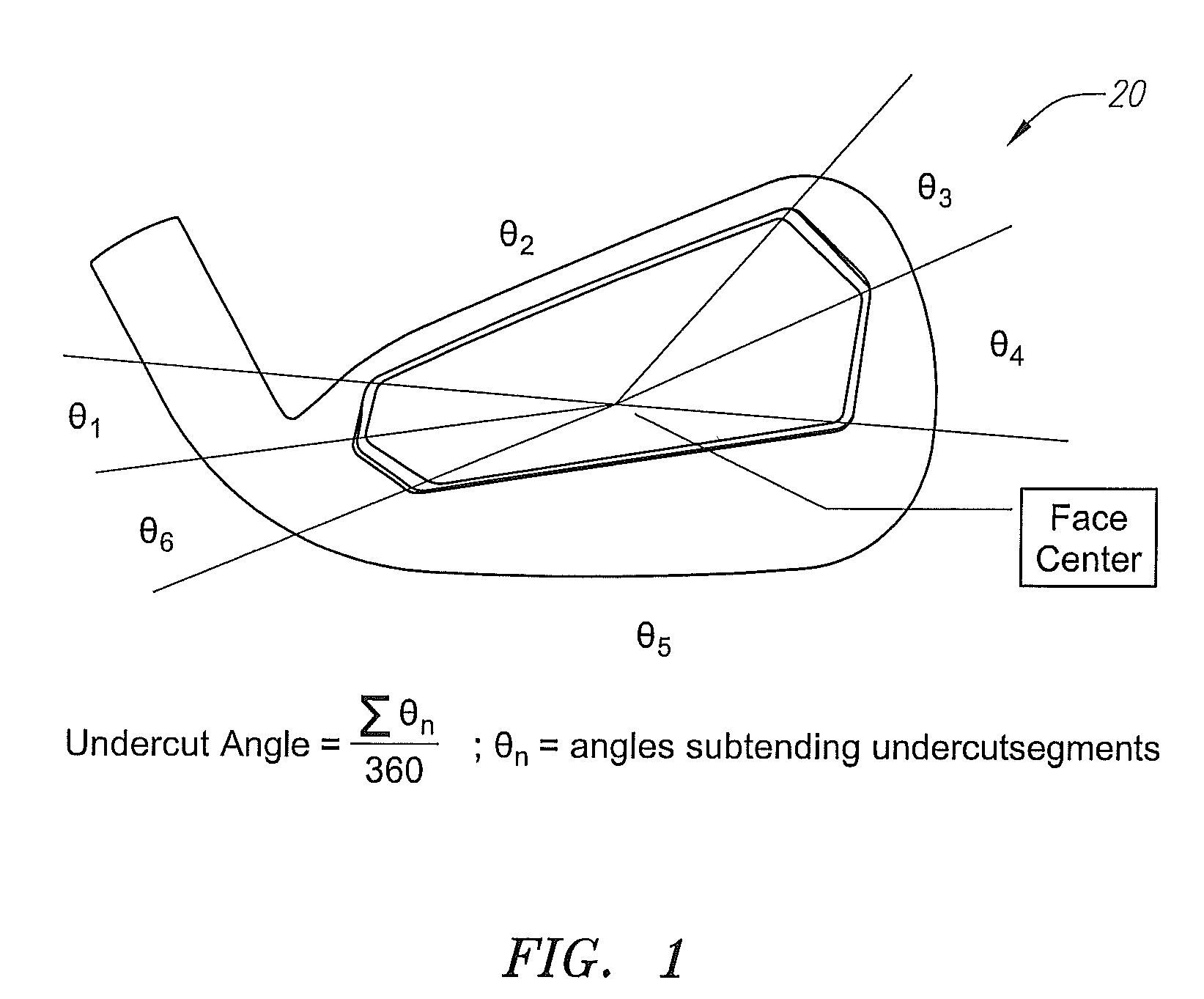Iron-type golf club head with chamfered leading edge
a golf club head and leading edge technology, applied in the field of golf club heads, can solve the problems of golfer impact being harsh, golfer error in delivering the ball, and desire being often in conflict with each other, so as to minimize the impact of turf and club, improve player clubs, and minimize the effect of turf interferen
- Summary
- Abstract
- Description
- Claims
- Application Information
AI Technical Summary
Benefits of technology
Problems solved by technology
Method used
Image
Examples
Embodiment Construction
[0045]As shown in FIGS. 1-16, an iron-type golf club is generally designated 20. The golf club head 20 includes a body 21 having a face 22 with a surface 23 and a plurality of grooves 25. The body 21 is preferably composed of a material such as titanium materials, stainless steel, carpenter steel, 1020 steel, amorphous metals and the like. The material of the body 21 preferably has a density between 4 g / cm3 and 10 g / cm3. Such titanium materials include pure titanium and titanium alloys such as 6-4 titanium alloy, 6-22-22 titanium alloy, 4-2 titanium alloy, SP-700 titanium alloy (available from Nippon Steel of Tokyo, Japan), DAT 55G titanium alloy available from Diado Steel of Tokyo, Japan, Ti 10-2-3 Beta-C titanium alloy available from RTI International Metals of Ohio, and the like. The body 21 is preferably manufactured through casting. Alternatively, the body 21 is manufactured through forging, forming, machining, powdered metal forming, metal-injection-molding, electro-chemical m...
PUM
 Login to View More
Login to View More Abstract
Description
Claims
Application Information
 Login to View More
Login to View More - R&D
- Intellectual Property
- Life Sciences
- Materials
- Tech Scout
- Unparalleled Data Quality
- Higher Quality Content
- 60% Fewer Hallucinations
Browse by: Latest US Patents, China's latest patents, Technical Efficacy Thesaurus, Application Domain, Technology Topic, Popular Technical Reports.
© 2025 PatSnap. All rights reserved.Legal|Privacy policy|Modern Slavery Act Transparency Statement|Sitemap|About US| Contact US: help@patsnap.com



